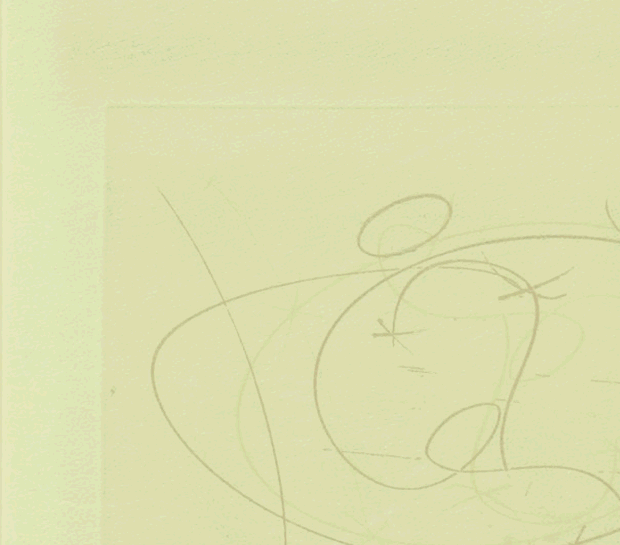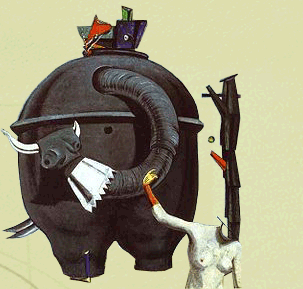










The object of the Surrealist movement was to give off the element of surprise. In the paintings of the Surrealist masters, everyday objects were juxtaposed with elements totally unlike them to shock and confuse the viewers. For example, Max Ernst’s elephant is shown with the head of a bull to make two average animals seem unusual. Surrealism is made up of the normal, put together to be abnormal.
Dali’s use of images seems to stem from the way that the Surrealists use them. Like them, he took the average and everyday and changed it into something that could shock and awe. The difference, however, was that he did not leave the objects in their normal state. If Dali wanted to use an elephant and bull like Ernst, he would approach it in an entirely different way. Instead of putting together two different animals, Dali would use a series of other objects to create the general shape and idea of an animal.
It appears that while both the general Surrealist movement and Salvador Dali enjoyed taking the normal and making abnormal, what can be considered an “image” is different in the two different contexts. Within the greater sect of Surrealist artists, an image is what it seems- a picture of an object that viewers can easily recognize. The definition of an image in a Salvador Dali painting is a familiar idea or concept that is conveyed through his abstract expression. The end result of the artist and the movement from which he came is the same, but the way in which they reach it is as different as the people who create the art.
The Elephant. 1921. Max Ernst.
|
|
|
||||||||||
|
|
|
|
|
 |
|
|
|
||||
 |
 |
|
|||||||||
|
|
 |
 |
|
||||||||
 |
 |
|
|||||||||
 |
 |
|
|||||||||
 |
 |
|
|||||||||
|
|
|
|
|
|
|
|
|
|
|
|
|